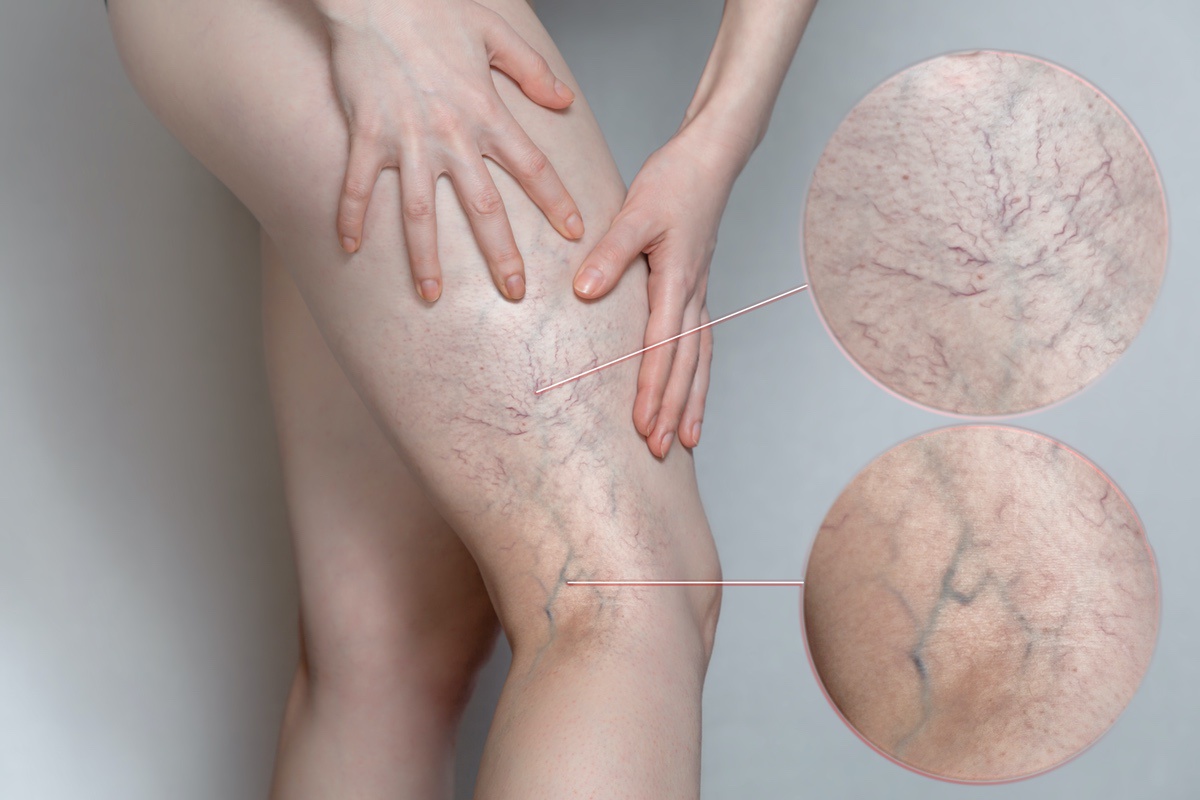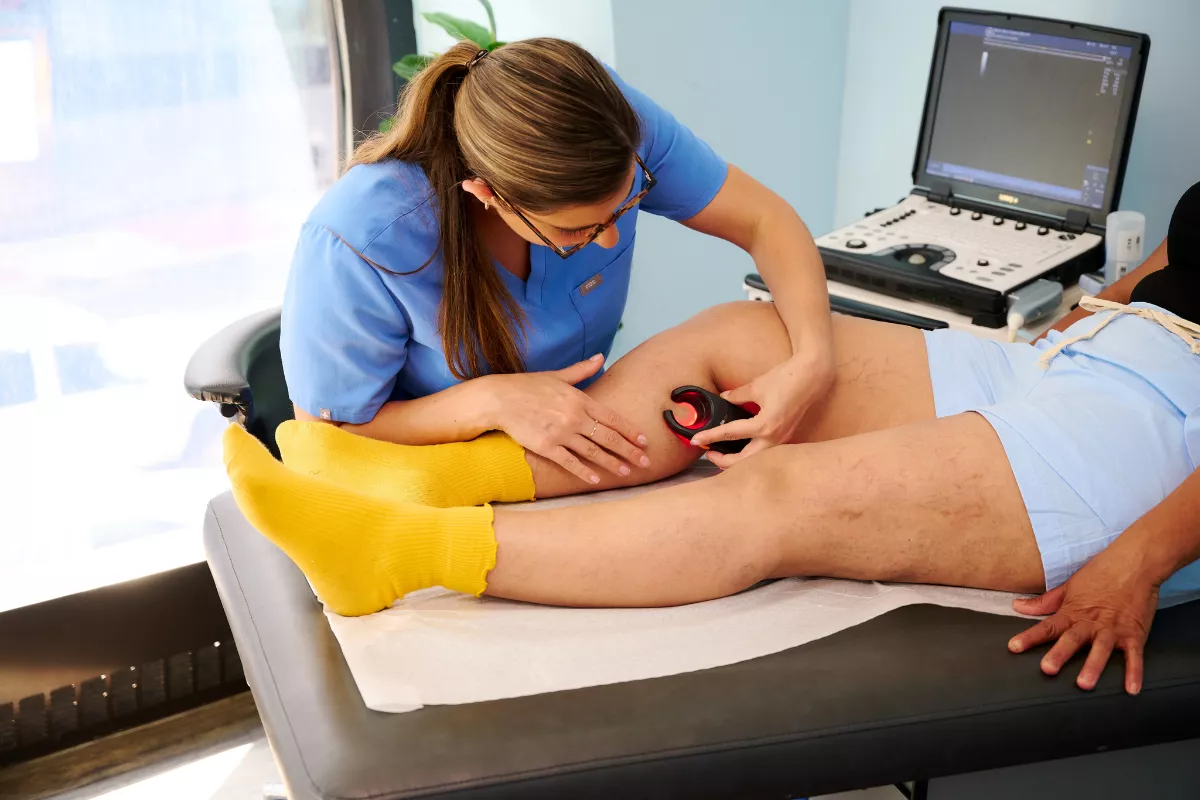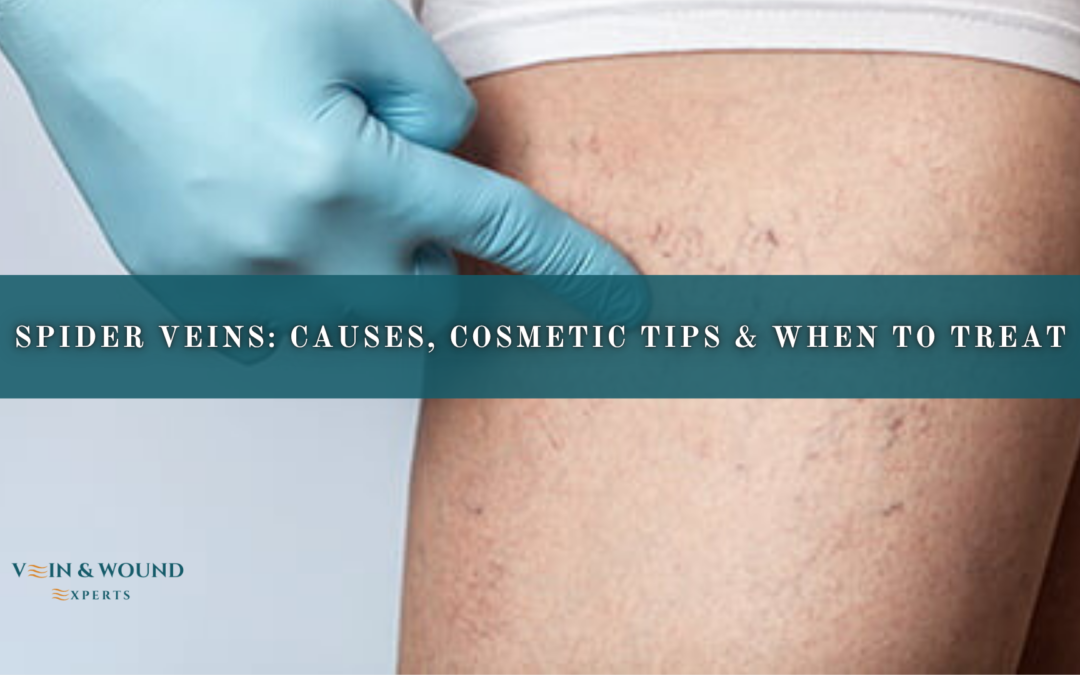What Triggers Spider Veins and When to Act 🕷️⚠️

Spider veins are a common condition that affect many individuals, especially as they age. They appear as small, twisted, or dilated blood vessels just beneath the skin’s surface. Often seen in the legs or face, these veins can range from being purely cosmetic to a sign of more serious vein health issues.
What Causes Spider Veins? 🧬
Spider veins, often referred to as telangiectasias, develop when blood vessels become enlarged or dilated, forming visible patterns that resemble a spider’s web. While the exact cause of spider veins isn’t always clear, several factors can contribute to their development:
1. Genetics 👨👩👧👦
If spider veins run in your family, you are more likely to develop them. A genetic predisposition can make you more vulnerable to weakened blood vessels and poor circulation, especially in the legs.
2. Hormonal Changes 🌀
Hormonal fluctuations due to pregnancy, menopause, or birth control pills can play a significant role in the development of spider veins. Estrogen can weaken vein walls, making them more prone to dilation.
3. Age and Gender ⏳
As we age, the veins naturally lose elasticity, which can lead to the formation of spider veins. Women are particularly at risk, as they are more likely to experience hormonal changes that contribute to vein health issues.
4. Prolonged Standing or Sitting 🧍♀️🪑
People who spend long hours standing or sitting may be at a higher risk of developing spider veins due to the strain on their leg veins. This can restrict blood flow and lead to vein dilation over time.
5. Obesity ⚖️
Carrying excess weight puts additional pressure on the veins, especially in the legs. Over time, this can cause veins to stretch and become more visible, leading to the formation of spider veins.
6. Sun Exposure 🌞
For those who develop spider veins on their face, excessive sun exposure can worsen the condition. UV rays can weaken the skin and blood vessels, making veins more visible.
When to Seek Treatment for Spider Veins 💡

Although spider veins are typically harmless and don’t pose serious health risks, they can affect your appearance and self-esteem. Here are some signs that it might be time to seek cure for spider veins:
1. Pain and Discomfort 💥
If spider veins are causing pain, aching, or a feeling of heaviness in the legs, it’s time to consider treatment. Discomfort can arise from poor circulation and the increased pressure on the veins.
2. Cosmetic Concerns 💅
If the appearance of spider veins is affecting your confidence, spider vein treatment options can help. Cosmetic treatments can significantly reduce or eliminate visible veins, improving your self-image.
3. Swelling and Inflammation 🦵
In some cases, spider veins can lead to swelling or inflammation in the affected area. If you notice persistent swelling, it could indicate underlying vein problems that require medical intervention.
4. Progression of the Condition 🚨
If you notice that your spider veins are spreading or becoming more prominent over time, it’s important to consult a vein clinic for a proper evaluation. Early intervention can prevent the condition from worsening and reduce the risk of developing more serious vein issues, such as varicose veins.
Treatment Options for Spider Veins 🌱
There are several treatment options for spider veins available today, both for cosmetic and medical purposes. These treatments are effective in reducing the appearance of spider veins and improving vein health.
1. Sclerotherapy 🧪
This is one of the most common and effective treatments for spider veins. During the procedure, a solution is injected into the affected veins, causing them to collapse and gradually fade away. Sclerotherapy is a non-surgical procedure that can treat multiple veins at once.
2. Laser Treatment 🌟
Laser therapy uses focused light to target and destroy spider veins without causing damage to the surrounding skin. This is an excellent option for people with small veins, especially those found on the face.
3. Endovenous Laser Treatment (EVLT) 🔥
For larger veins, Endovenous Laser Treatment (EVLT) may be recommended. This procedure involves using a laser to seal off problematic veins, directing blood flow to healthier vessels. While this treatment is commonly used for varicose veins, it can also be effective for large spider veins.
4. Radiofrequency Ablation (RFA) ⚡
This treatment uses radiofrequency energy to heat and close off problematic veins. It’s similar to EVLT but uses radio waves instead of lasers to treat the veins.
5. Vein Stripping and Ligation 🔪
In some cases, particularly for larger veins or veins that haven’t responded to other treatments, vein stripping may be considered. This involves surgically removing the affected veins.
Choosing the Right Treatment at a Vein Clinic 🏥

When considering spider vein treatment, it’s crucial to visit a vascular centers with experienced professionals who specialize in vascular care. Vein health centers can provide a thorough evaluation of your condition and recommend the most suitable treatment plan. Whether you are looking for cosmetic relief or addressing underlying vein issues, a vein specialist can guide you through the available options and help you achieve the best possible results.
Take Action Against Spider Veins
Spider veins may seem like a minor cosmetic issue, but they can signal deeper vein health concerns. By understanding the triggers and symptoms, and knowing when to seek professional treatment, you can effectively manage spider veins and prevent them from worsening. Don’t hesitate to consult with a vein clinic for guidance on the right treatment for spider veins.
Andi Scarifi
Position
